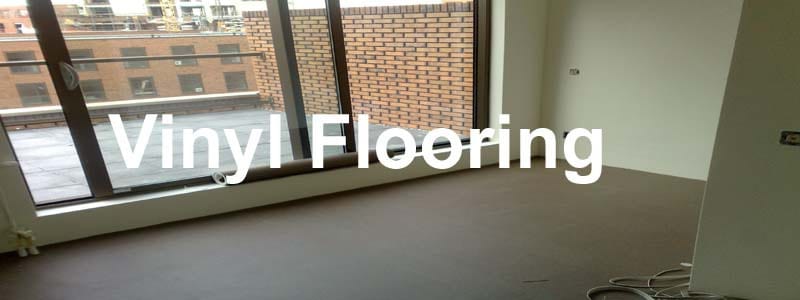Vinyl flooring is one of the least expensive solutions for installing flooring in your home or workplace. It is also one of the easiest to install. Vinyl flooring is made of synthetic fibers and is designed to resist damage from traffic, stains and water. Vinyl flooring tile comes in 9-by-9 inch or 12-by-12 inch tiles, and vinyl sheets flooring comes in 6-foot or 12-foot-wide sheets.
Vinyl flooring has one of the widest ranges of patterns available, since just about any pattern and color conceivable can be applied. Vinyl wood flooring and vinyl plank flooring can simulate the look of hardwood flooring at a fraction of the cost. You can even cut custom shapes and patterns using various colors and finishes. This makes vinyl flooring one of the most adaptable flooring types available.
Vinyl flooring offers many advantages over other kinds of flooring. Vinyl flooring is referred to as “resilient flooring” because it is softer than wood or ceramic tile and it flexes under your feet, making it more comfortable. Noise reduction is another benefit of vinyl flooring. Cleaning vinyl flooring is a snap, due to its moisture and stain resistant properties. For areas with high traffic or moisture, such as kitchens and laundry rooms, vinyl provides almost complete waterproofing and protective layers. The color and like-new appearance of vinyl flooring last longer, since vinyl flooring is durable.
Vinyl flooring does have some limitations. It is not designed for use in excessive heat, cold, or sunlight, because the adhesive works best at room temperatures. Some vinyl flooring can be susceptible to tears or indentations from knives or heavy cans.
Mannington vinyl flooring is a popular flooring choice, with a broad range of colors and styles to meet a wide variety of residential needs. All Mannington vinyl flooring includes ScratchResist® and Teflon® Surface Protector, which ensure durability and stain resistance throughout the life of the floor.
Installation methods for vinyl flooring vary by brand and style, so it’s best to consult the manufacturer regarding the best installation method for your needs. It is essential that the surface to which it will be attached be as smooth as possible since vinyl flooring tile is quite thin. Any imperfection in the underlying surface will appear through the tiles. Vinyl flooring can be installed on top of old vinyl flooring, wood, or concrete, as long as the surface is clean, smooth and flat.
Once the tiles or sheets are installed, the adhesive should be left to set hard (at least 24 hours) before introducing heavy traffic or loads. In addition, avoid washing the floor for a few days after installation so as not to disturb the new seams.
To maintain vinyl flooring, sweep the floor at least weekly and clean up spills quickly to avoid stains. Occasional mopping and polishing with vinyl flooring polish will help maintain the beauty and gloss of your vinyl flooring. However, waxing and buffing are not necessary. Remember that wet vinyl flooring is slippery, and use caution when walking on wet floors.
With proper care, your vinyl flooring will maintain its beauty and color and will provide many years of comfortable, quiet service to your home.
